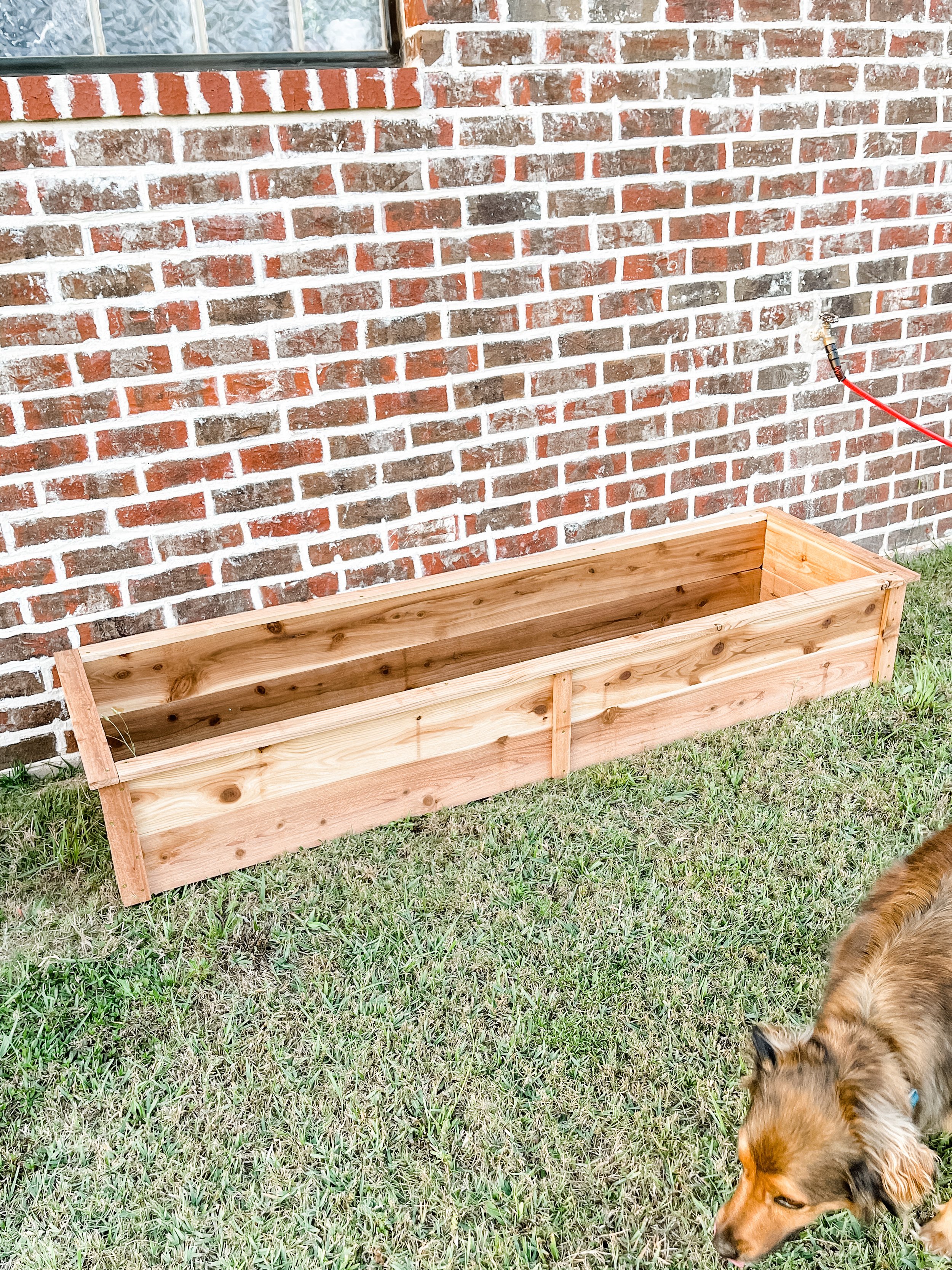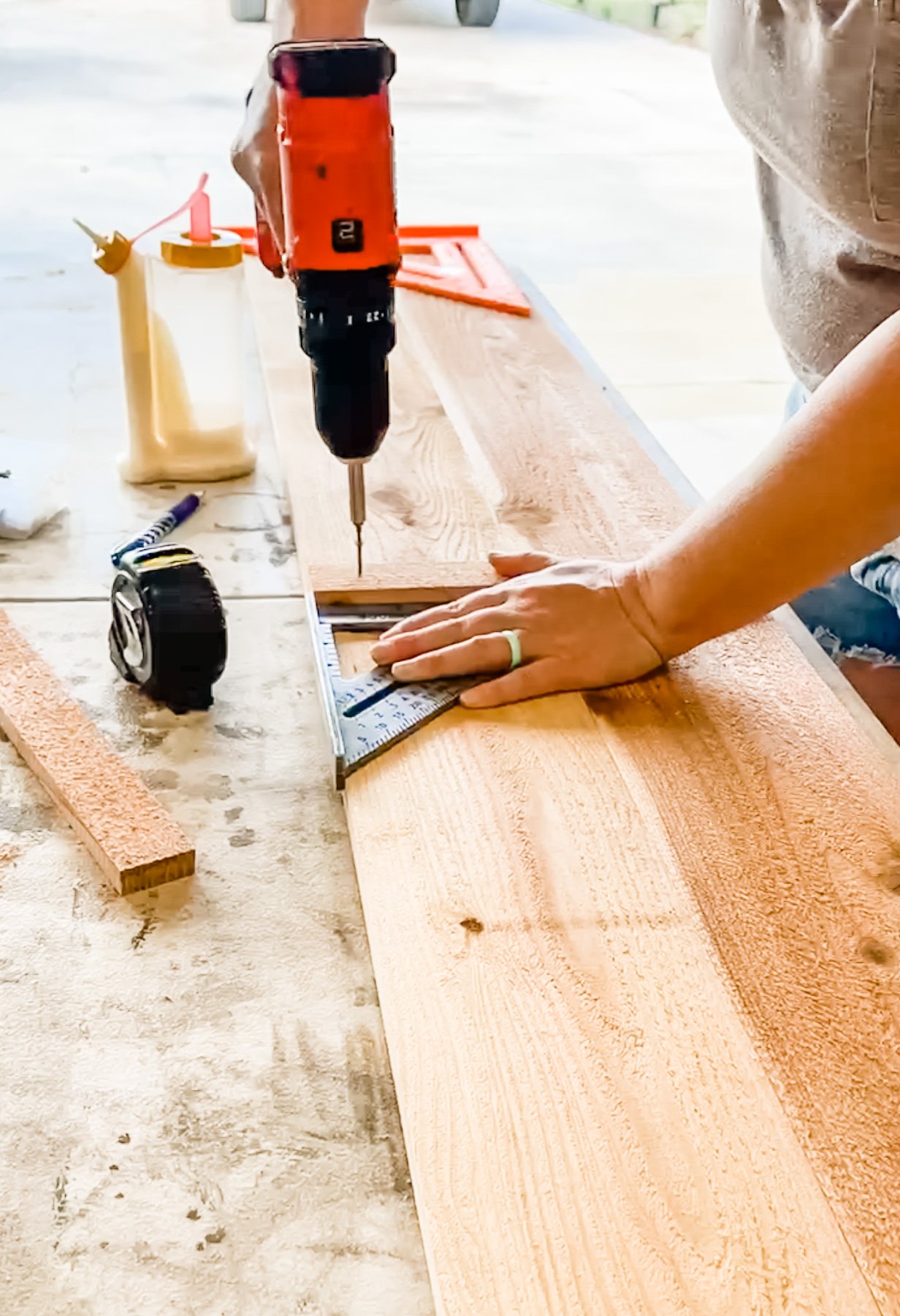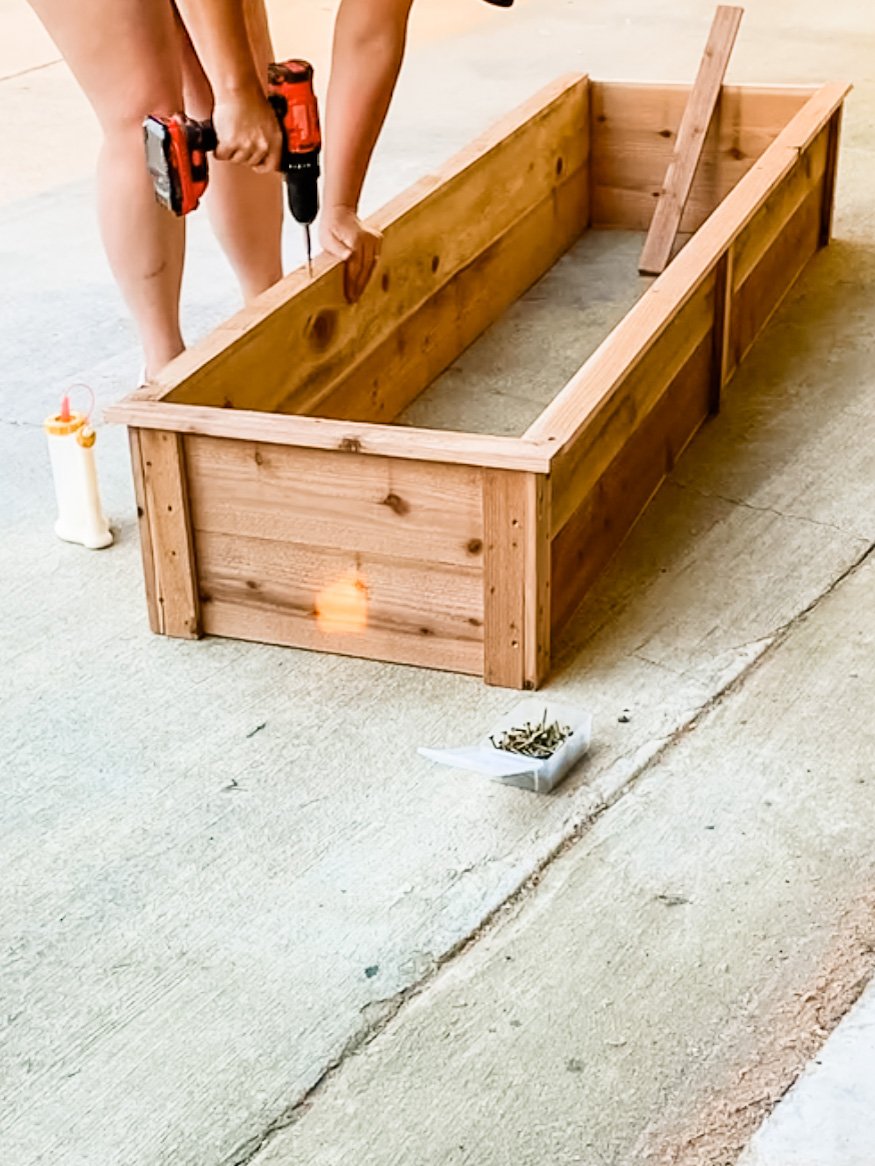Easy DIY Raised Garden Bed for under $25
Last spring, I made it my mission to learn some gardening techniques. I’ve never had a green thumb, in fact, I usually kill everything I plant. So there is a lot of room to learn. But I wanted to use my skills that I do know and build myself some raised garden beds to get started. I’m still working on my gardening techniques, as much of my plants didn’t make it through the winter (I live in Coastal Mississippi and we had a few freezes this winter), but what did last? My garden beds :)
I started by making one for myself, figuring out the cheapest, most economical way to make these, without leftover scraps. I also wanted to make sure that I was using untreated wood. That may be a controversial statement considering untreated wood doesn’t stand up to the elements like treated wood, however, it’s more important to me and my family to introduce less toxins and chemicals to the food we grow. I’d rather have to rebuild these in a few years (or maybe longer, we shall see) than be eating the chemicals that seep into the soil and feed my plants. No judgement if you decide to get treated wood, or paint/stain yours, do what’s right for you! Cedar is naturally resistant to rot and decay, plus its a deterrent for pests.
I’ve done a few videos on the process, so if you are a visual person, they are linked below. Here are the written steps.







Table saw (if you don’t have a table saw, see below)
Exterior wood glue
2 inch wood screws
1 inch wood screws
Drill bit for the screws (usually the package comes with a drill bit)
Pencil or pen
Tape measurer
Materials:
(7) Untreated cedar pickets at 6ft (I get mine at Lowes in the garden section) These are the dog-eared fence pickets and they should be $3.98 each or less if the price of lumbar has come down in your area
Cut List:
Long Side - (4) 1x6 pickets at 6 ft
Short Side - (4) 1x6 pickets at 17.75 in
Corner Supports - (8) 1x2 at 11 in
Middle Supports - (2) 1x1.5 at 11 in
Long Trim - (2) 1x2 at 72 in
Short Trim - (2) 1x2 at 19 in
Step 1:
Make your cuts according to the cut list above. You can leave the dog-eared side on, or you can cut those off and adjust accordingly. Rip 2 of the pickets into 3 sections each (1x2, 1x2 and 1x1.5) will be used for trim, corner braces and middle braces. The remaining 5 pickets will make up the long sides (4 pickets) and short sides (1 picket).
Step 2:
Once all of your cuts are made, you can start assembling everything. Start with the short sides. Add one corner support to the edge of two short side pieces with enough overhang to screw into the long pieces. This will be 5/8 in if you want it perfectly aligned. Using a square will help you line everything up, pressing down as you screw the 1 inch screws in. Repeat this for the other corners on the short sides, and then again for the long sides. Lastly, add your 2 middle supports in the middle of the long sides.
Step 3:
You should now have four sides with corner supports, two short sides and 2 long sides. Lay a long side flat on a table so the corner pieces are on the back closest to the table. Screw a short side into the long side and repeat the screws on the long side for added security. This should make an L shape. Now that it will stand up on it’s own, add the second long side screwing in the same places. Then add your last short side, making sure to overlap the corners the same way you did on the first side. Now you have a rectangle box. You can use glue along the way.
Step 4:
Now add your trim around the top. This gives the box a nice finish and also a lip to grab on to. Use the 2 inch screws to attach making sure to screw into the base.
Step 5:
You can add a base to this if you want, but I designed mine to go directly on the ground and I use garden cloth on the bottom.
If you don’t have a table saw:
You can buy 1x2x8’s in lumber. This size will work for the middle and corner supports as well as the trim around the edge. If you go this route, you can probably get by with just 5 cedar pickets instead of 7.
Here are some slightly bigger ones I made…


